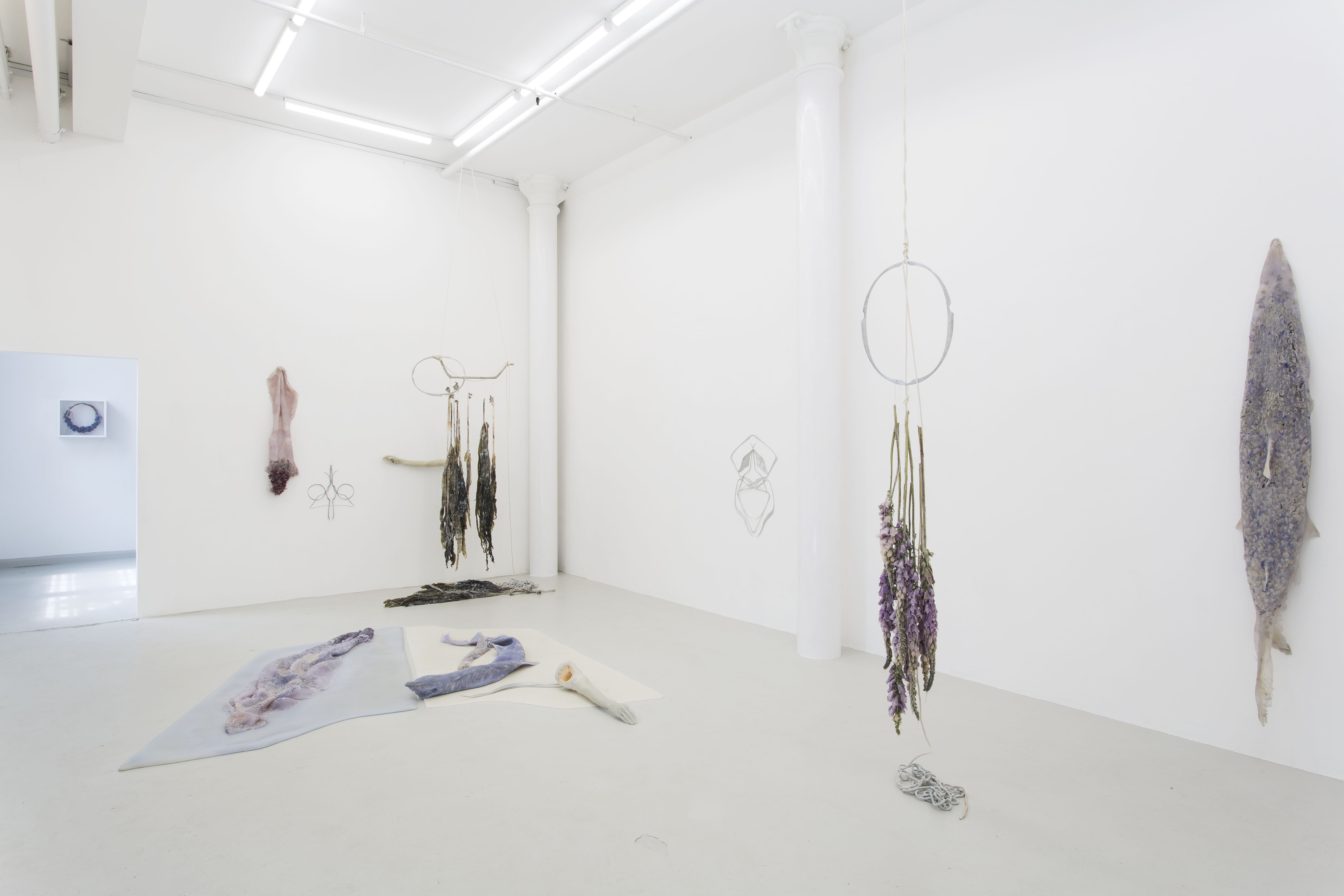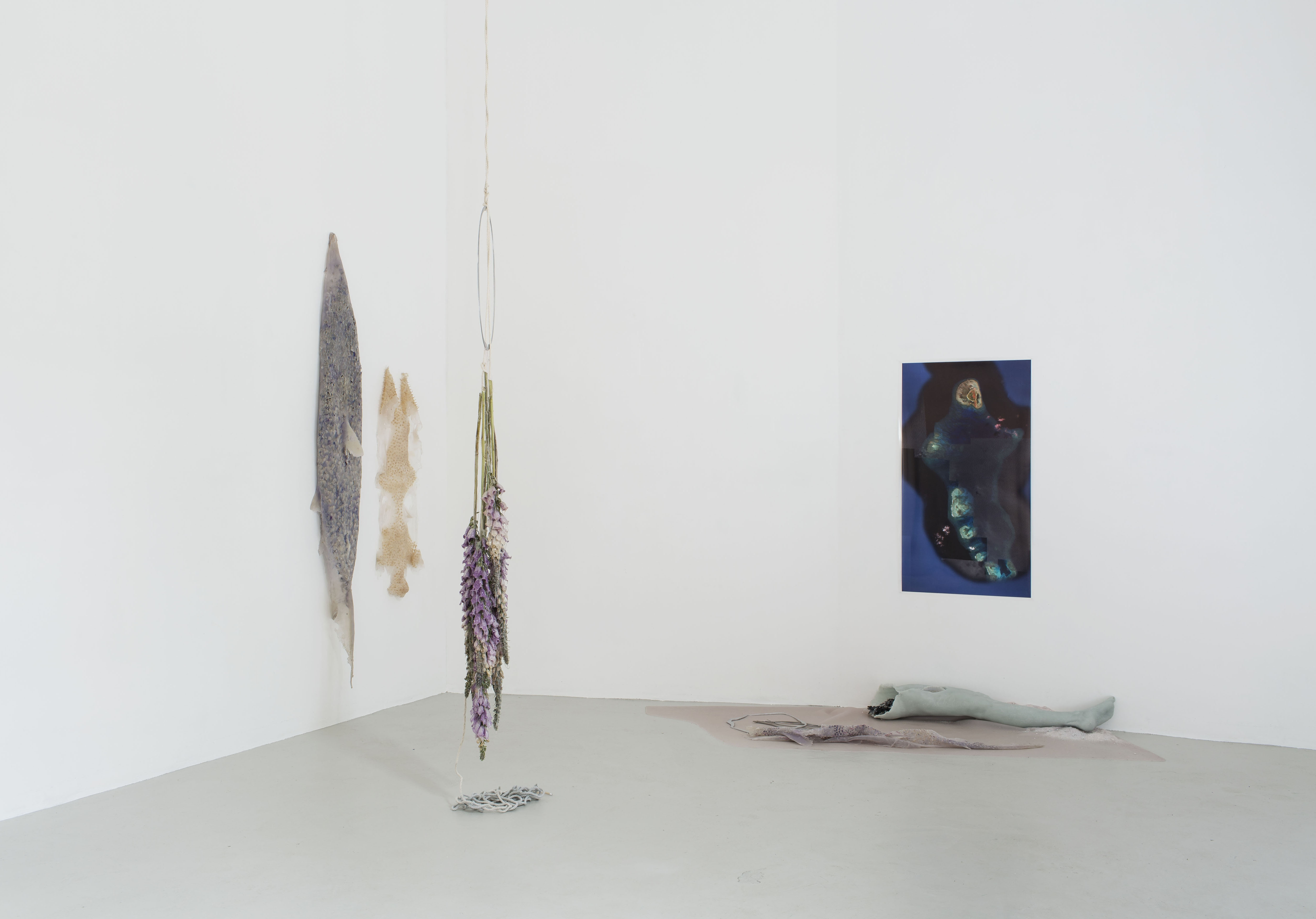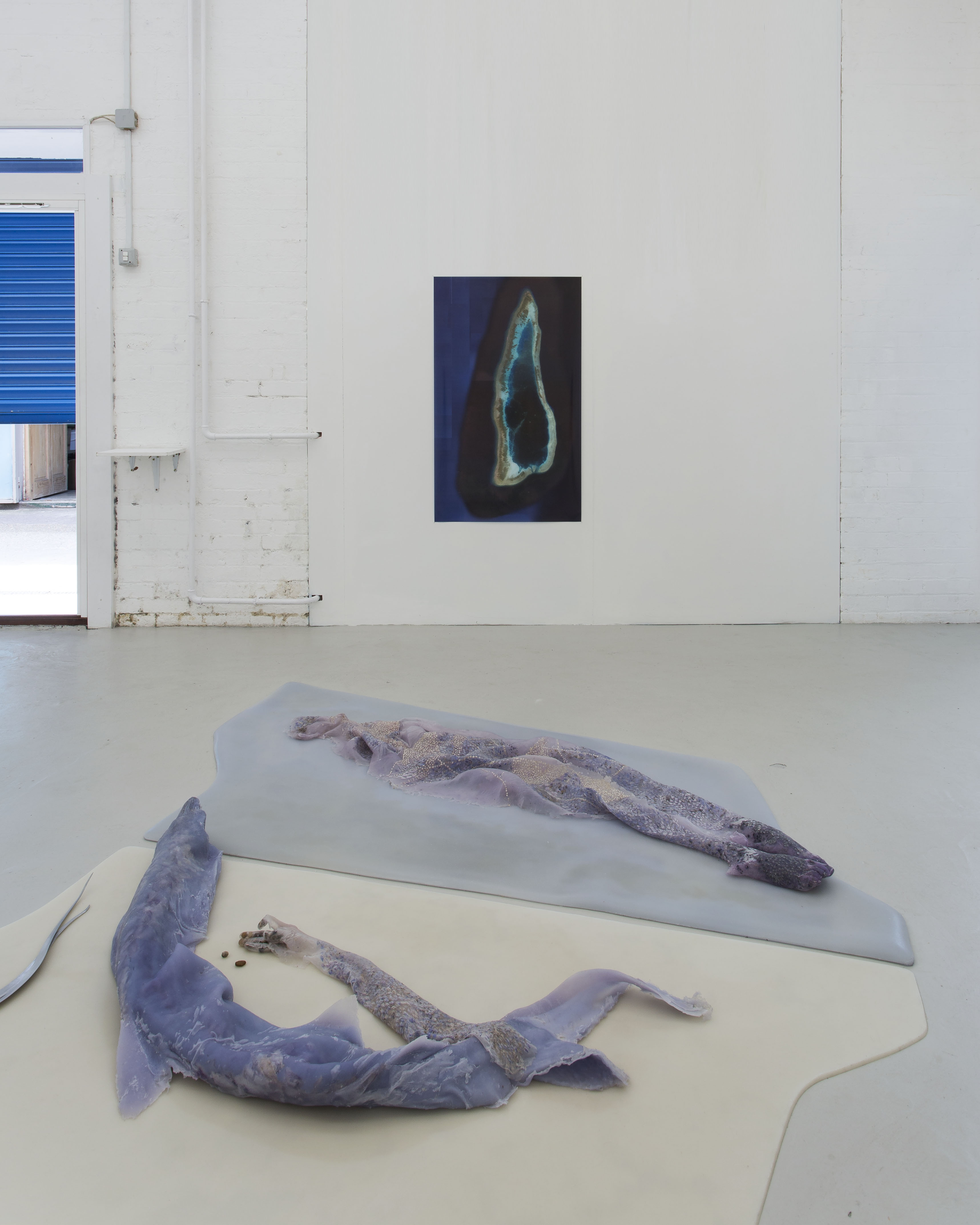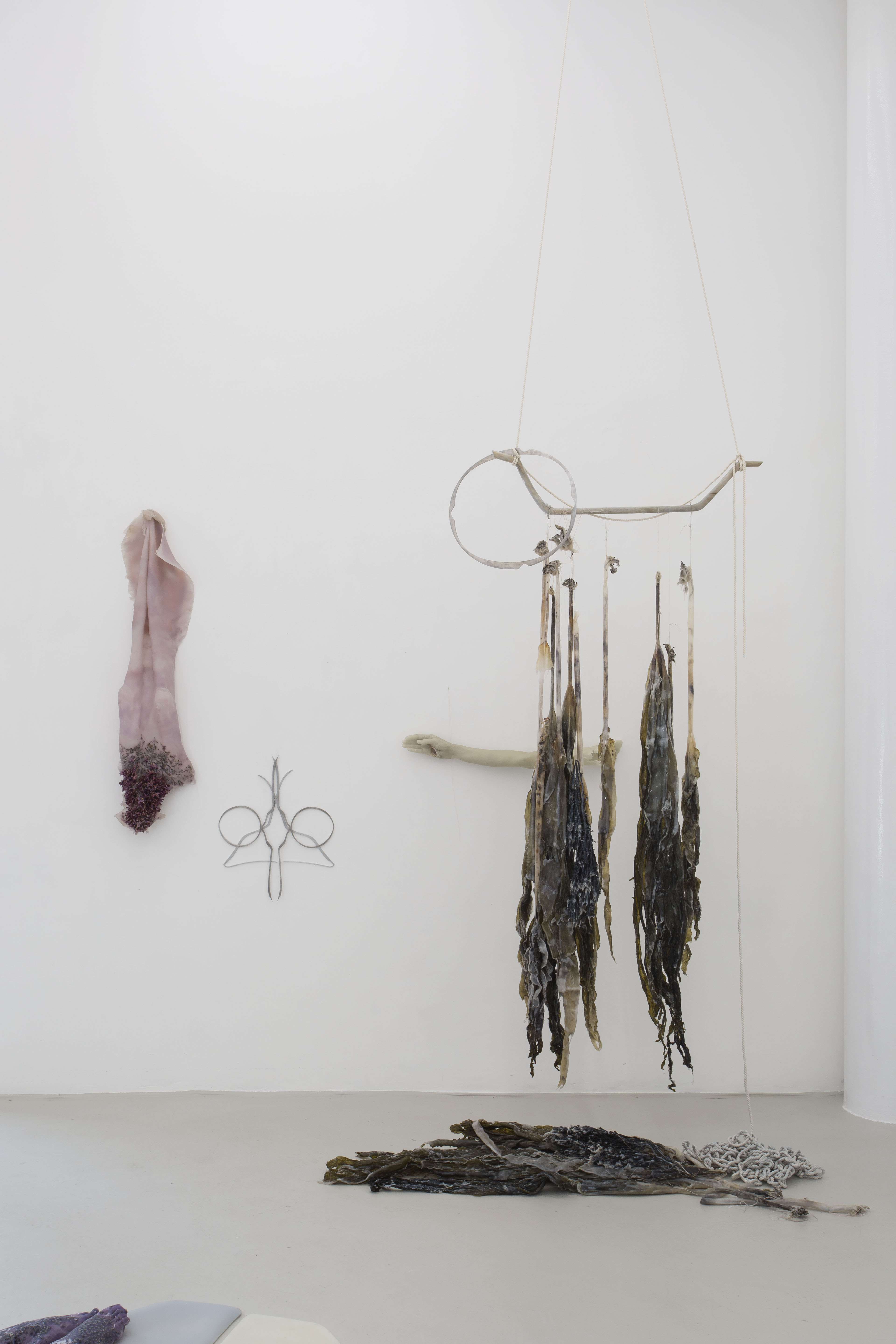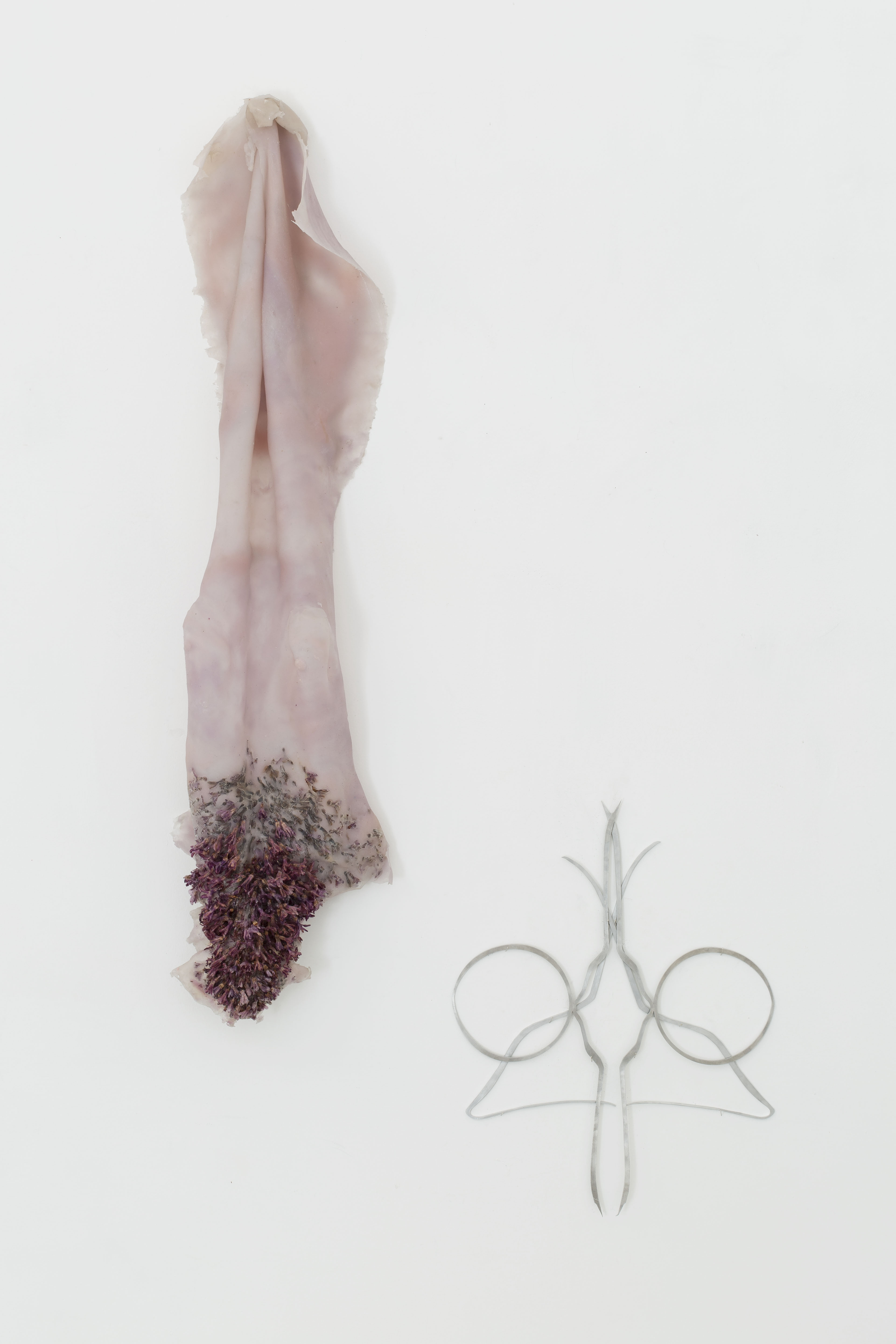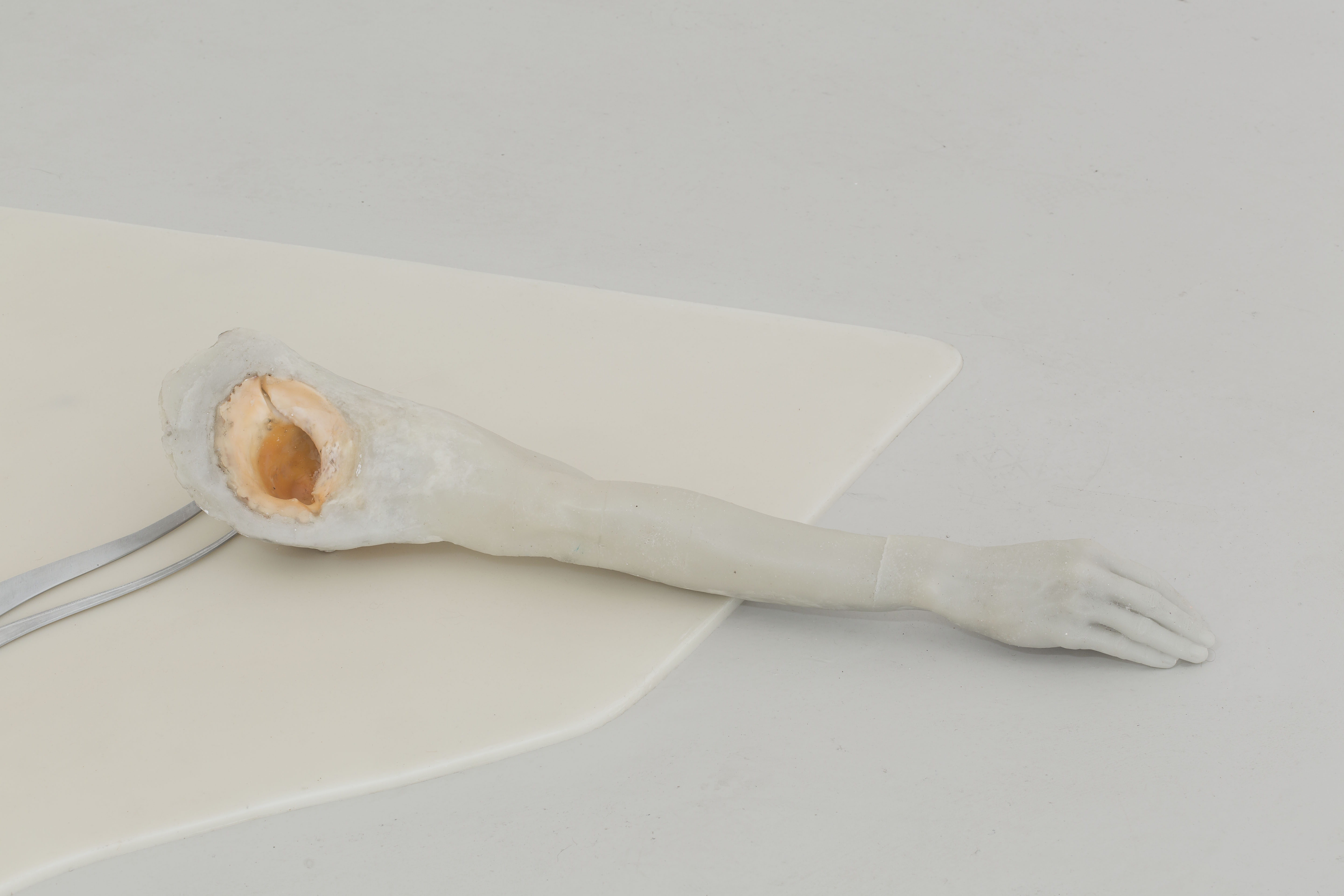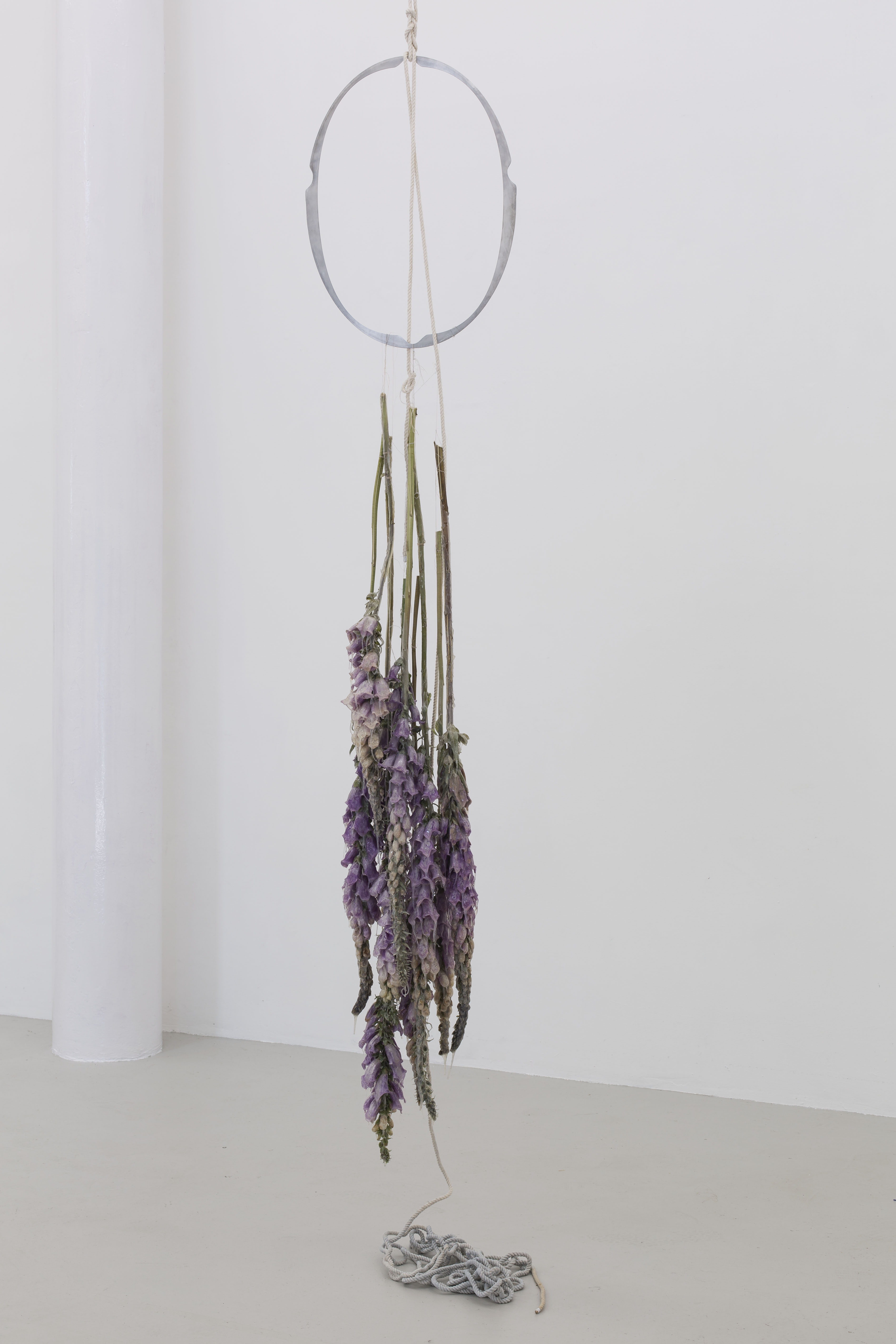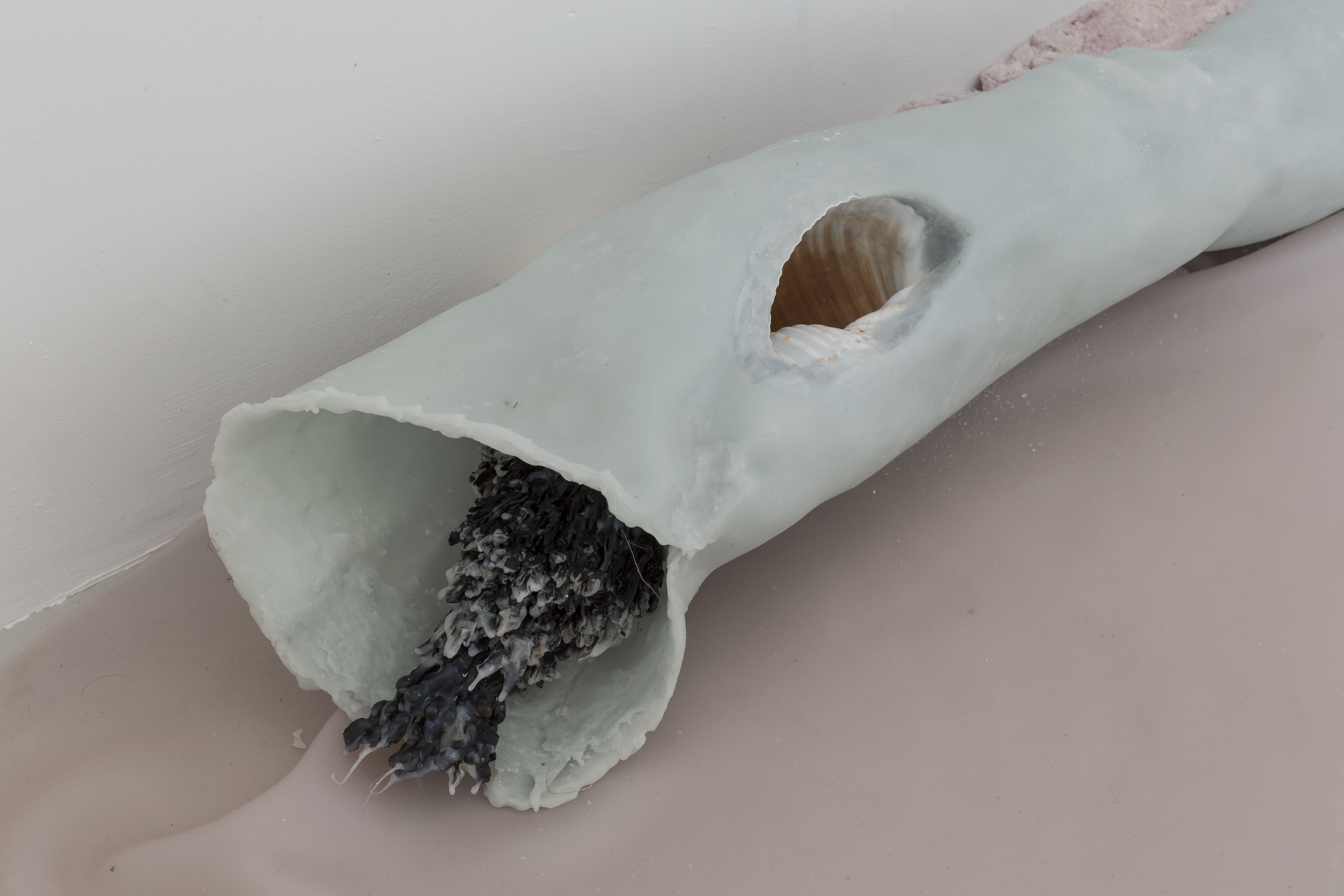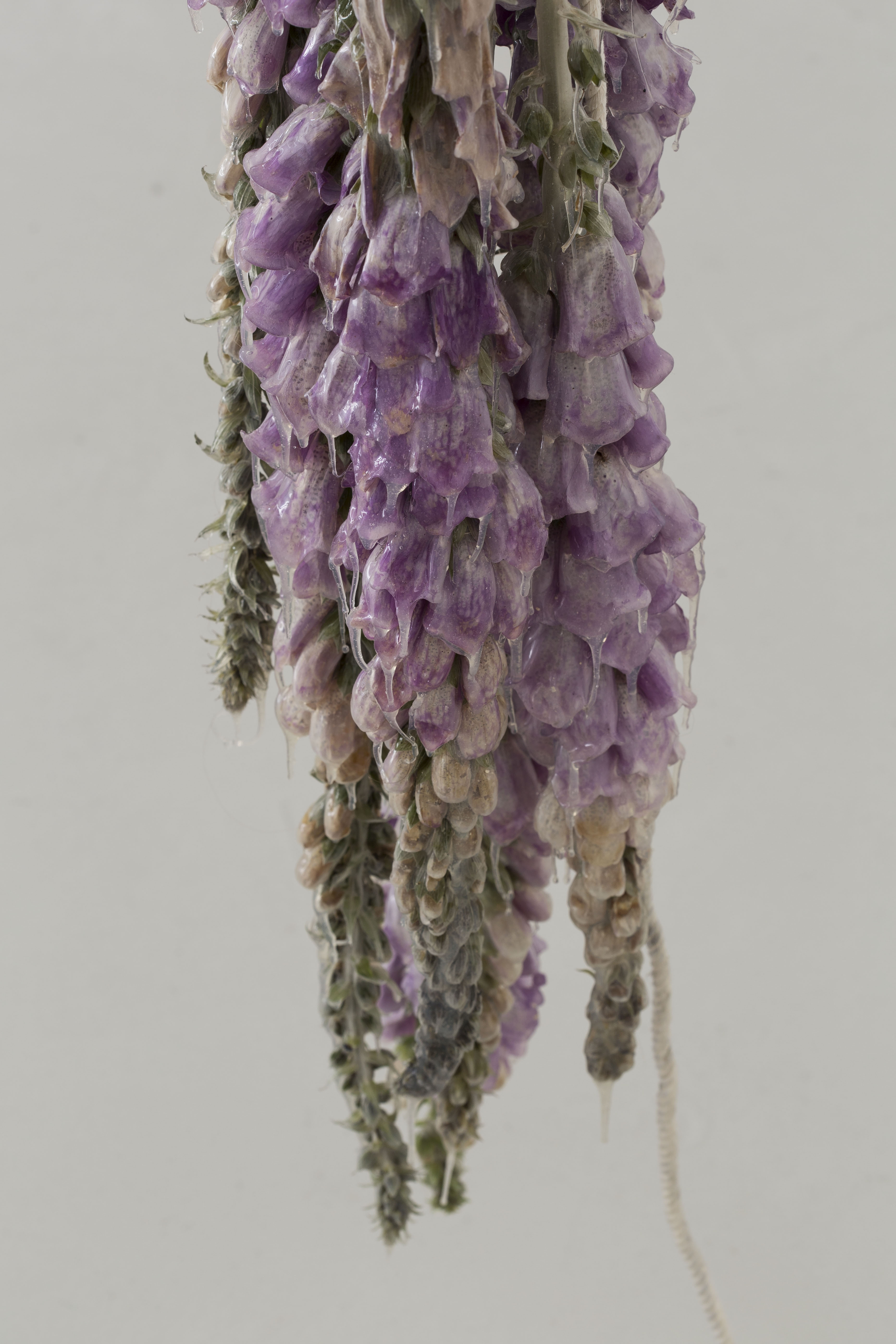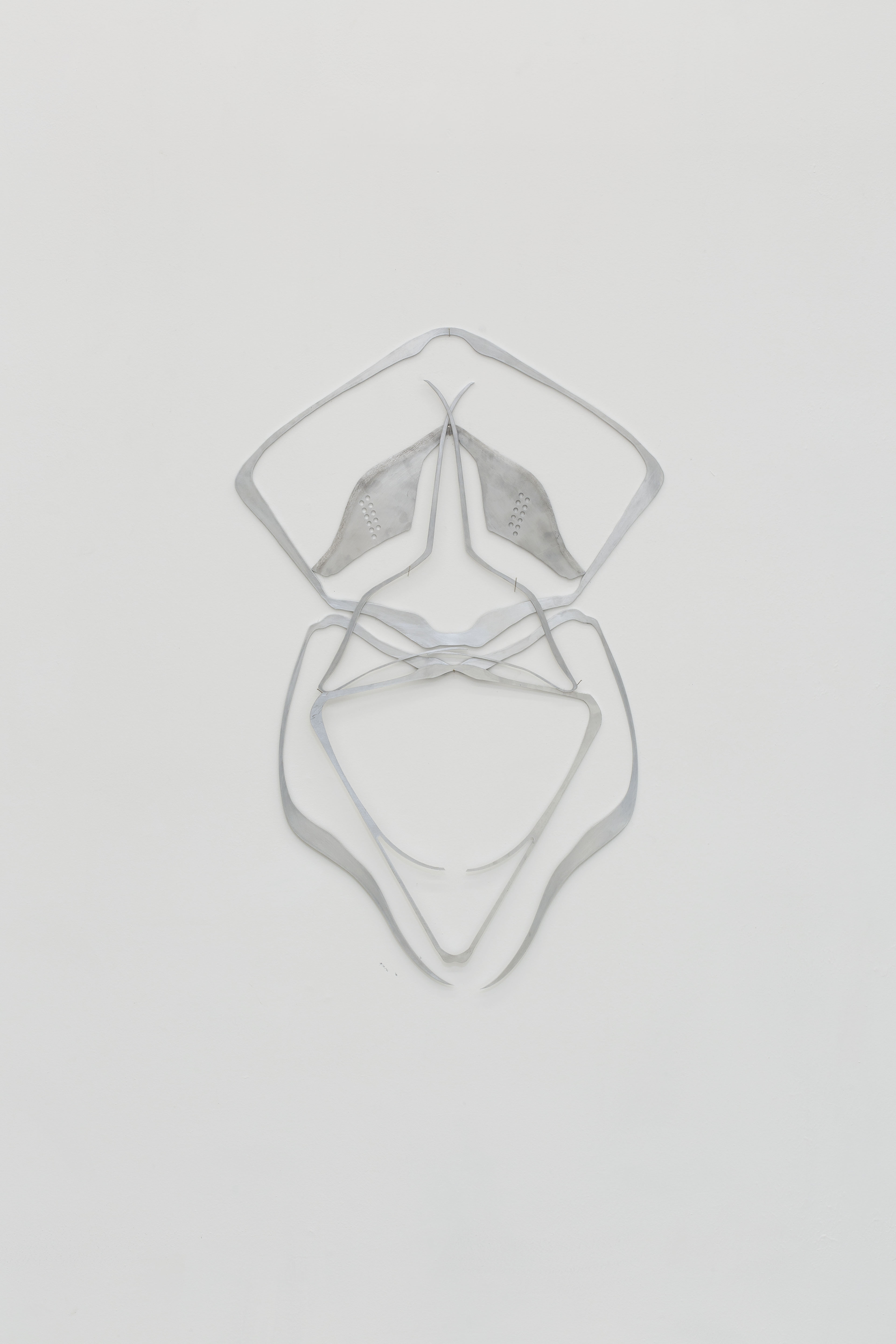Gimmel
28 June – 28 July 2018
Bosse and Baum, London
Emerging from an exploration of the relationship between ritual, myth, ecological fragility, and the politics of the
body, this exhibition took its name from a kind of wedding ring used in late medieval and early
modern Britain. The gimmel ring, made from a single piece of metal, comprised two interlocking
bands, which were then separated and worn by each partner prior to marriage. At marriage,
the two rings were re-joined and worn by the woman, marking their union - and her new
status as a married woman.
This partially autobiographical body of sculpture and installation takes the gimmel ring
as a figurative tool for investigating the psychological, mythological, historical and political
dimensions of bodily intimacy and kinship. Drawing on her experiences growing up in Aoteroa New
Zealand, Austin’s work is a complex and critical interrogation of practices and visions of
joining and severance; between people, cultures, human and non-human agencies.
Centring on an imagined dialogue with her great, great grandmother - part of an early
generation of European settlers in Aoteroa New Zealand, who spent her life rearing her family in a tent in the
New Zealand bush after the death of her alcoholic husband - Austin’s installation imagines a
territory in which culture, materiality and the organic merge as memory-traces across layered
generations. Steel tools, informed by Austin's research into Suzette Haden Elgin’s constructed
feminist language, Láadan, as well as other ancient scripts, stand at once as ritual objects
poised for use, as trophies from a distant culture and as a threat posed to the fragile, quasi-
aquatic bodies they surround. These bodies, inspired by Maori mythology and British
folklore, are supported by decidedly Western, biomedical prostheses; poised together either in
readiness for, or in resistance to, unbreakable bindings.
Through these figures, held within the symbolic range of the gimmel ring- Austin attempts to
address the entanglement of privilege, oppression and representation that always already
accompanies Western interest in “native” or “folk” religions and cultures. Within this context,
the installation confronts the painful inequalities and struggles of cultural debt, the
uncomfortable complicity and risk of socially sanctified intimacy, and the inseparability of
growth from constraint and decay.

